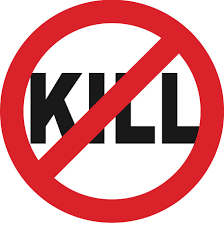 Early in my animal welfare career I developed a “no-kill” ethic. I trained shelter staff to apply this “ethic” by using the same criteria for deciding a homeless animal’s fate that a compassionate owner or conscientious veterinarian would apply to a beloved pet. That is, healthy and treatable animals are not killed simply because we lack the room or resources to care for them.
Early in my animal welfare career I developed a “no-kill” ethic. I trained shelter staff to apply this “ethic” by using the same criteria for deciding a homeless animal’s fate that a compassionate owner or conscientious veterinarian would apply to a beloved pet. That is, healthy and treatable animals are not killed simply because we lack the room or resources to care for them.
The “no-kill” ethic embodies a commitment that for every animal who comes through a shelter’s doors there is a kind and loving person or family – and it is our mission to bring them together.
There are three statistics animal shelters can use to measure their success, or failure, in reducing pet euthanasia (or killing). To rely on any one or two of these numbers tells only a partial, and possibly obfuscated, story. When you compare all three of these numbers you are better able to tell your organization and your community’s whole story:
The Live Release Rate (LRR) refers to the number of animals who get out of a shelter alive. I call this “heartbeats in/heartbeats out”. It includes adoptions, transfers to rescue organizations, and lost pets returned to owners. Some shelter experts claim a 90 percent LRR is the threshold to “no-kill.” During my tenure at the Yavapai Humane Society (YHS) in Arizona, I maintained a 97 percent LRR for several years. This is a good internal measurement.
The Euthanasia Rate reports the actual number of animals euthanized. In the first year implementing the no-kill ethic, YHS achieved a 63 percent reduction in killing, followed by a 64 percent reduction in year two, and a 40 percent reduction in year three; for an overall reduction of 92 percent. This too is an important internal measure of success or progress.
The Per Capita Kill Rate refers to the number of animals killed per 1,000 residents. Prior to implementing the no-kill ethic, YHS was killing 17.25 animals per 1,000 residents. This was one of the worst kill rates in Arizona. However, at the end of my tenure we had reduced the YHS kill rate to 0.2; the lowest in the nation for several consecutive years! This number is the best for comparing your community with other communities in your state or across the nation.
